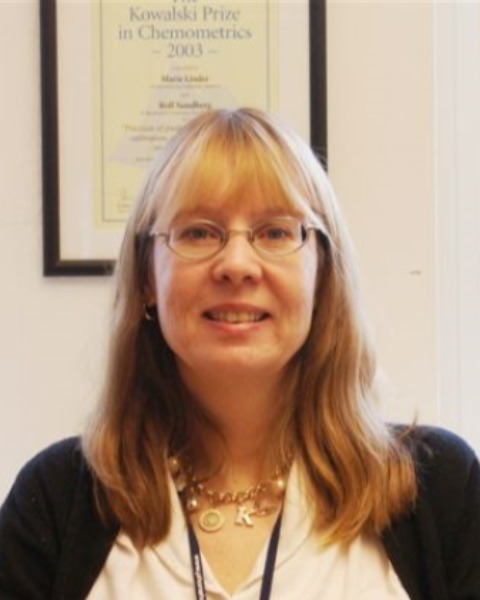
Marie Linder, PhD (she/her/hers)
Senior statistician
Centre for Pharmacoepidemiology, Department of Medicine Solna, Karolinska Institutet, Stockholm, Sweden, Sweden
My name is Marie Linder and I have a PhD in mathematical statistics from Stockholm University. My doctoral thesis "Bilinear Regression and Second Order Calibration" was completed in 1998 and defended in January 1999. Besides my PhD position at Stockholm University, I also worked as a lecturer and assistant teacher. In 1998 I joined Astra as a biostatistician. The first years I worked with clinical trials and then gradually moved towards toxicology. In 2007, I began working as a statistician at the National Board of Health and Welfare, working with the social service registers. After 4 years, in 2011, I started as a statistician at the Centre for Pharmacoepidemiology. When joining Karolinska Institutet, I restarted my research career within the for me new field of pharmacoepidemiology. I have currently contributed to approximately 50 peer-reviewed papers on pharmacoepidemiology and to more than 25 commissioned research studies (drug utilization and post-authorization safety studies). Moreover, I teach and I have co-supervised one doctoral student, two postdocs, one visiting researcher and one master student, and main supervised four master students. When familiarizing myself with pharmacoepidemiology I identified the problem of defining exposure to drugs from dispensings. We have investigated exposure definitions through an industry-academia collaborative postdoc project with Janssen, a master thesis in mathematical statistics and the current poster presentation to be submitted as a manuscript. For the future I have started a dermatology research team in collaboration with dermatologists and statisticians. The aim is to identify clinically relevant research gaps for dermatological conditions, mainly atopic dermatitis and psoriasis. The focus of the studies will be pharmacoepidemiology, but also disease epidemiology will be covered. The identified research gaps will be addressed using innovative statistical methods including, but not limited to, methods developed at the centre for pharmacoepidemiology for defining exposure to dispensed medications.
Poster(s):
-
Wednesday, August 28, 20248:00 AM - 1:30 PM CESTTuesday, August 27, 20248:00 AM - 6:00 PM CESTMonday, August 26, 20248:00 AM - 6:00 PM CESTWednesday, August 28, 20248:00 AM - 1:30 PM CEST
